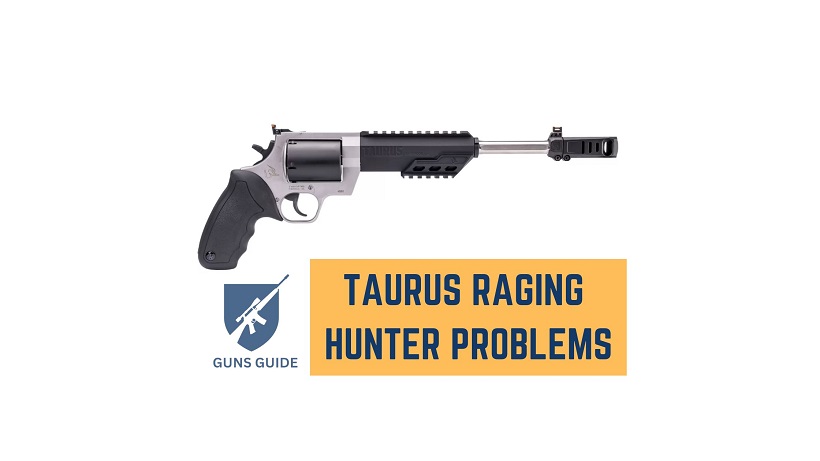In the world of handguns, Glock has long been a gold standard for reliability, durability, and performance. Among the many Glock models, the Glock 20 and Glock 40 are two popular choices for those seeking a powerful and versatile sidearm. Both chambered in the powerful 10mm Auto, these pistols are well-suited for hunting or personal defense. While they share some similarities, they also have distinct differences that make each one unique. In this article, we’ll explore the Glock 20 and Glock 40 in detail, touching on their background, specifications, pros and cons, and much more.
A Brief History of the Glock 20 and Glock 40
Glock 20
The Glock 20 was introduced in 1991 as a response to the FBI’s search for a more powerful handgun cartridge. The 10mm Auto had been developed in the 1980s and offered a significant increase in performance over the 9mm Luger. The Glock 20 was specifically designed as a platform to handle the stout recoil and pressures of the 10mm Auto cartridge. Over the years, the Glock 20 has earned a reputation as a reliable and powerful sidearm, suited for hunting, personal defense, and law enforcement.
Glock 40
The Glock 40 was introduced in 2015 as part of Glock’s “Practical Tactical” series of handguns. Like the Glock 20, it is also chambered in 10mm Auto and features several design improvements aimed at enhancing accuracy and performance for competitive shooting and hunting. The Glock 40 is equipped with a longer barrel and slide to extract more velocity from the 10mm Auto cartridge, while also offering extended sight radius for improved accuracy.
Specifications Comparison
Size and Weight
The Glock 20 is a full-size pistol, featuring a 4.61-inch barrel and a standard magazine capacity of 15 rounds. In terms of size, it measures 8.03 inches in overall length, 1.27 inches in width, and 5.47 inches in height. Unloaded, the Glock 20 weighs 30.71 ounces.
In comparison, the Glock 40 is even larger, with a 6.02-inch barrel and the same standard magazine capacity of 15 rounds. Its overall length is 9.49 inches, width is 1.28 inches, and height is 5.51 inches. Unloaded, the Glock 40 weighs a slightly heftier 35.45 ounces.
Action and Trigger
Both the Glock 20 and Glock 40 utilize the Glock Safe Action, a striker-fired system with three passive safety features. These include a trigger safety, a firing pin safety, and a drop safety, all designed to ensure the pistol only discharges when the trigger is intentionally pulled.
In terms of trigger pull weight, both pistols have an advertised trigger pull of approximately 5.5 pounds. However, some users report that the trigger on the Glock 40 feels slightly smoother and lighter compared to the Glock 20. This difference, though subtle, could be a consideration for some shooters.
Pros and Cons of Each Model
Glock 20 Pros
- Reliability: Glock’s reputation for reliability extends to the Glock 20, which has proven itself time and again in the field.
- Power: The 10mm Auto cartridge offers a significant increase in power over the traditional 9mm or .40 S&W options.
- Versatility: The Glock 20 can serve a variety of purposes, from personal defense to hunting medium-sized game.
- Capacity: The 15-round standard magazine capacity is a plus for those concerned with having ample ammunition available.
Glock 20 Cons
- Size and Weight: The Glock 20 is a large and relatively heavy pistol, which may be seen as a downside for some users.
- Felt Recoil: The powerful 10mm Auto generates significant recoil, which can be challenging for some shooters to manage effectively.
Glock 40 Pros
- Accuracy: The longer barrel and slide of the Glock 40 provide an extended sight radius for improved accuracy, making it ideal for hunting or competitive shooting.
- Better Ballistics: The extended barrel of the Glock 40 allows for enhanced ballistic performance, extracting more velocity from the 10mm Auto cartridge than the Glock 20.
- Optic-Ready: Glock 40 comes with an MOS (Modular Optic System) slide configuration which allows for easy mounting of popular micro-red dot sights.
Glock 40 Cons
- Size and Weight: Like the Glock 20, the Glock 40 is also large and heavy, which may not be suitable for all users.
- Concealability: The Glock 40’s size makes it less ideal for concealed carry purposes.
- Cost: The Glock 40 generally comes at a higher price compared to the Glock 20, due to its additional features and performance enhancements.
Choosing the Right Glock: Glock 20 vs Glock 40
When it comes to choosing between the Glock 20 and Glock 40, the ultimate decision comes down to personal preferences and intended use. Both handguns offer similar levels of reliability, chambering the powerful 10mm Auto cartridge. However, they differ in size, barrel length, and feature sets.
For those who prioritize a versatile firearm suitable for personal defense or hunting, the Glock 20 might be the better option. Its smaller size compared to the Glock 40 may be more manageable for some shooters.
On the other hand, for those seeking a highly accurate, performance-oriented pistol with optic-mounting capabilities, the Glock 40 may be the right choice. The added barrel length and slide provide improved accuracy and ballistic performance, while the MOS slide configuration will accommodate popular micro-red dot sights.
Ultimately, both the Glock 20 and Glock 40 are impressive firearms, providing reliable, versatile, and powerful options for discerning shooters. By considering the specific features, advantages, and potential drawbacks of each model, one can confidently choose the ideal Glock pistol to meet their shooting needs.
Frequently Asked Questions
What is the difference between Glock 20 and 40?
The primary difference between the Glock 20 and Glock 40 is the size and barrel length. The Glock 40 is a long-slide pistol with a longer 6.02-inch barrel, while the Glock 20 has a 4.6-inch barrel. The Glock 40 is mainly designed for hunting, competition shooting, or range use, while the Glock 20 is more suited for self-defense and general-purpose use.
What is the difference between Glock 40 and 10mm?
The Glock 40 is a specific model of Glock pistol chambered in 10mm Auto caliber, while “10mm” refers to the ammunition caliber used by the Glock 40 and other pistols. There is no difference between Glock 40 and 10mm in terms of caliber, as the Glock 40 is a 10mm pistol. However, there are other 10mm handguns available on the market as well, not just the Glock 40.
Is Glock 40 a powerful handgun?
Yes, the Glock 40 is considered a powerful handgun. It is chambered in 10mm Auto, which is a potent and versatile round capable of delivering impressive ballistics. The 10mm Auto round is known for its stopping power, making the Glock 40 suitable for hunting, self-defense, and range shooting.
What is the most powerful Glock?
The most powerful Glock handgun is often considered to be the Glock 20 or Glock 40, both chambered in 10mm Auto. This round provides a combination of high velocity, energy, and stopping power, making it more powerful than other popular Glocks chambered in calibers like 9mm or .40 S&W. The choice between the Glock 20 and 40 depends on your personal preference and intended use, with the Glock 40 being more suited for hunting and competition due to its longer barrel.
Which is more suitable for self-defense, the Glock 20 or the Glock 40?
Between the Glock 20 and Glock 40, the Glock 20 is generally more suitable for self-defense. It has a shorter barrel and more compact size, making it easier to carry concealed and handle in close quarters. The Glock 40, however, is more apt for hunting, competition, or range use due to its longer barrel and greater accuracy potential.
What is the recoil like on the Glock 20 and Glock 40?
The recoil on both the Glock 20 and Glock 40 can be relatively strong due to their 10mm chambering. However, the polymer-frame design and other recoil-mitigating features of Glock pistols help to manage and reduce the felt recoil. The longer barrel and slide on the Glock 40 may slightly reduce the felt recoil compared to the Glock 20, but both will have similar shooting characteristics.
Are there any aftermarket parts and accessories available for Glock 20 and Glock 40?
Yes, there is a wide range of aftermarket parts and accessories available for both the Glock 20 and Glock 40. This includes sights, triggers, recoil springs, slide releases, holsters, and many more. Since Glock pistols share a common design, many of these parts and accessories are often compatible with multiple Glock models, making customization and upgrades readily available.
How do the sights on the Glock 20 and Glock 40 differ?
Both the Glock 20 and Glock 40 come factory-equipped with polymer fixed sights, with a white dot front sight and a white “U” outline rear sight. However, as mentioned earlier, there is a wide variety of aftermarket sights available for both Glock models, allowing users to customize their sights based on their preferences and intended use.
What is the capacity of the Glock 20 and Glock 40?
Both the Glock 20 and Glock 40 typically have a standard magazine capacity of 15 rounds of 10mm Auto ammunition. However, aftermarket extended magazines are also available, offering higher capacities if desired. It is essential to note that some jurisdictions may have magazine capacity restrictions, so it is crucial to comply with local laws.
Can I convert my Glock 20 or Glock 40 to another caliber?
Yes, it is possible to convert your Glock 20 or Glock 40 to another caliber through the use of aftermarket conversion kits or replacement barrels. The most common conversion is to .40 S&W, which allows for more affordable and readily available ammunition for practice and training. Ensure that you only use compatible and reliable conversion components to maintain the integrity and safety of your Glock handgun.

